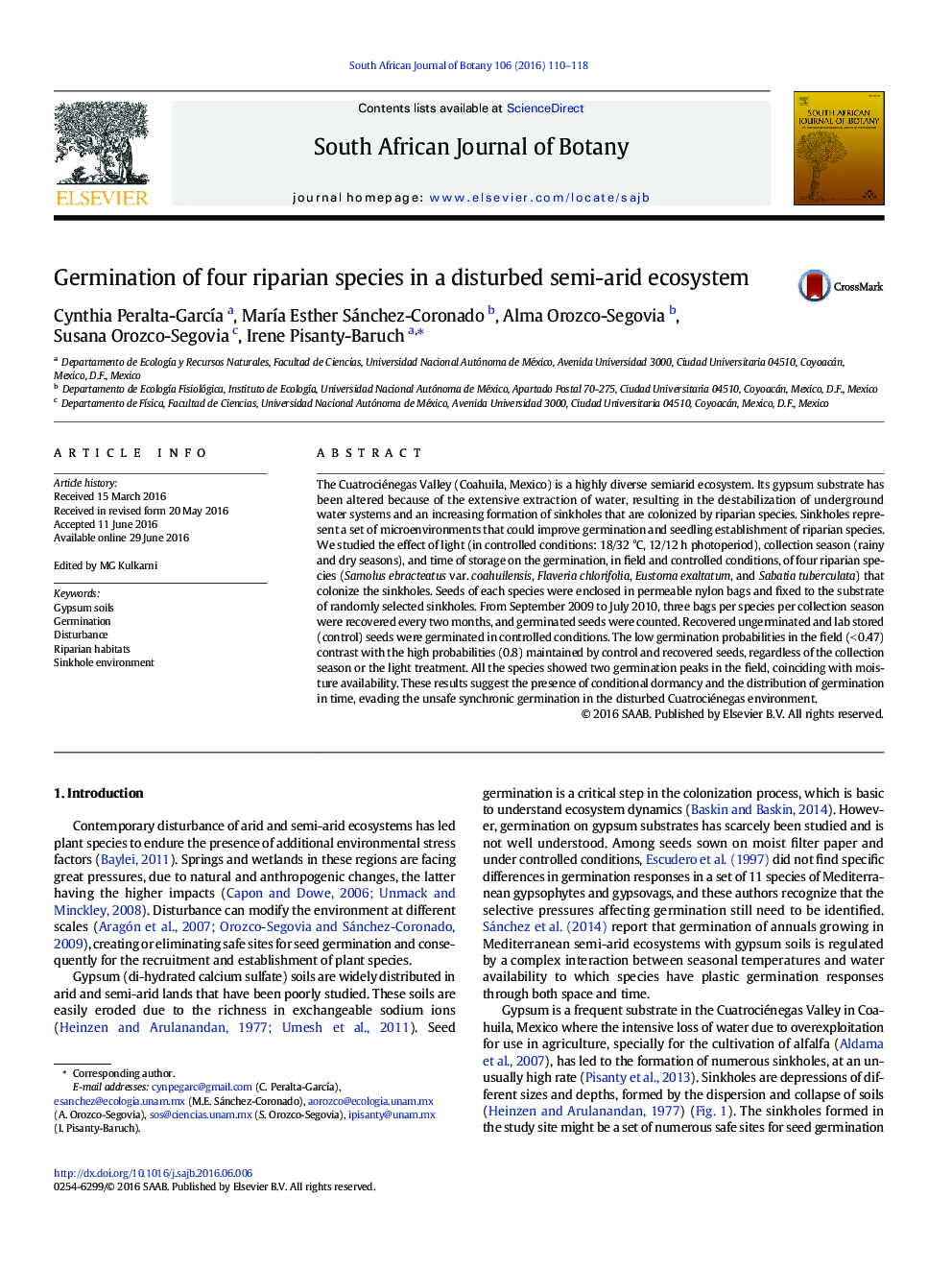| Article ID | Journal | Published Year | Pages | File Type |
|---|---|---|---|---|
| 4520195 | South African Journal of Botany | 2016 | 9 Pages |
•Under disturbance, sinkholes are safe microenvironments for riparian species.•Seed batches of the studied species presented functional polymorphism.•Seeds of the studied species were conditionally dormant and form soil seed banks.•Field germination was positively related to precipitation.
The Cuatrociénegas Valley (Coahuila, Mexico) is a highly diverse semiarid ecosystem. Its gypsum substrate has been altered because of the extensive extraction of water, resulting in the destabilization of underground water systems and an increasing formation of sinkholes that are colonized by riparian species. Sinkholes represent a set of microenvironments that could improve germination and seedling establishment of riparian species. We studied the effect of light (in controlled conditions: 18/32 °C, 12/12 h photoperiod), collection season (rainy and dry seasons), and time of storage on the germination, in field and controlled conditions, of four riparian species (Samolus ebracteatus var. coahuilensis, Flaveria chlorifolia, Eustoma exaltatum, and Sabatia tuberculata) that colonize the sinkholes. Seeds of each species were enclosed in permeable nylon bags and fixed to the substrate of randomly selected sinkholes. From September 2009 to July 2010, three bags per species per collection season were recovered every two months, and germinated seeds were counted. Recovered ungerminated and lab stored (control) seeds were germinated in controlled conditions. The low germination probabilities in the field (< 0.47) contrast with the high probabilities (0.8) maintained by control and recovered seeds, regardless of the collection season or the light treatment. All the species showed two germination peaks in the field, coinciding with moisture availability. These results suggest the presence of conditional dormancy and the distribution of germination in time, evading the unsafe synchronic germination in the disturbed Cuatrociénegas environment.
